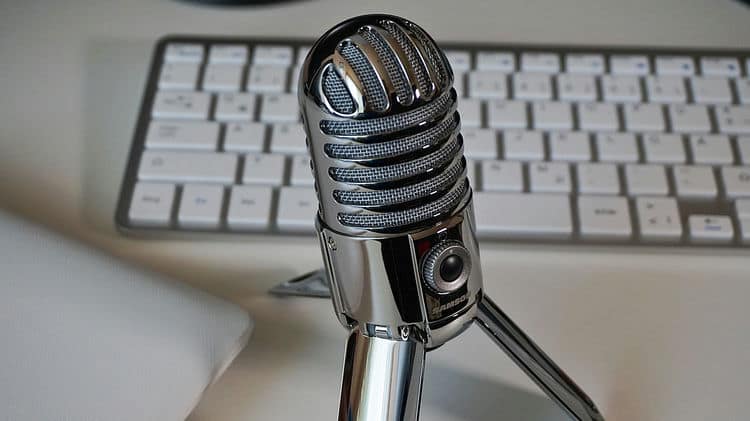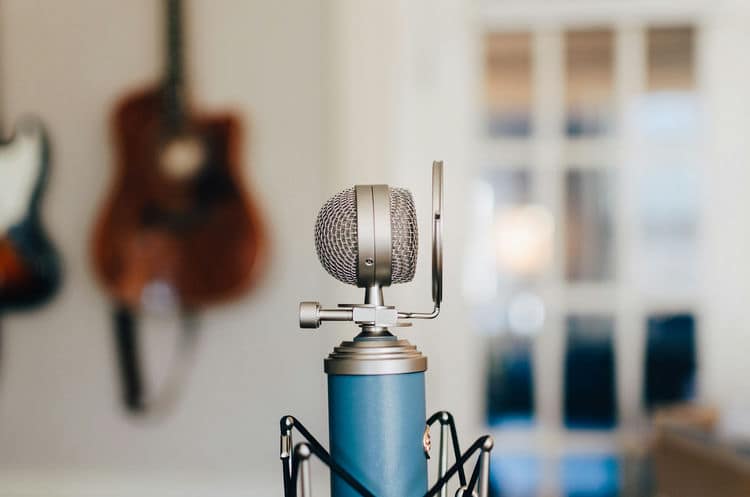Index
Introduction
A condenser microphone, also known as a capacitor microphone, is a type of microphone that uses a capacitor to convert sound waves into an electrical signal.
Condenser microphones are widely used in various applications such as recording studios, live performances, broadcasting, and podcasting. They are known for their high sensitivity, clarity, and accuracy in capturing sound.
Unlike dynamic microphones that use a moving coil to generate an electrical signal, condenser microphones use a thin diaphragm that vibrates in response to sound waves, changing the distance between two metal plates that form a capacitor.
This change in distance causes a variation in the electrical charge stored in the capacitor, which is then amplified to produce an audio signal.
Condenser microphones come in various shapes and sizes, from large diaphragm studio mics to small, portable units used for field recording. In this article, we will delve deeper into the technology behind condenser microphones, their advantages and disadvantages, and how they are used in different settings.
How a Condenser Microphone Works
A condenser microphone, also known as a capacitor microphone, is a type of microphone that converts sound waves into an electrical signal using a capacitor. The capacitor consists of two metal plates, one of which is very thin and flexible, called the diaphragm, and the other is fixed in place.
The two plates are separated by a small gap, and when sound waves hit the diaphragm, it vibrates back and forth, changing the distance between the plates.
As the distance between the plates changes, the electrical charge stored in the capacitor also changes. This variation in charge creates an electrical signal that corresponds to the sound waves hitting the diaphragm. The signal is then amplified and processed to produce an audio recording.
Condenser microphones are highly sensitive and can pick up very subtle changes in sound. They are commonly used in recording studios for vocal and instrument recording, as well as in broadcast and live sound applications. They are also popular for podcasting and other forms of voice recording, due to their ability to capture high-quality audio.
One drawback of condenser microphones is that they require an external power source to operate, typically provided through a battery or phantom power from a mixer or audio interface.
Additionally, they are more delicate and can be more expensive than other types of microphones. However, their high-quality sound and sensitivity make them a popular choice for many recording and live sound applications.

Advantages and Disadvantages of Condenser Microphones
A condenser microphone, also known as a capacitor microphone, is a type of microphone that converts sound waves into an electrical signal using a capacitor.
Condenser microphones are known for their high sensitivity and accuracy in capturing sound, making them a popular choice in recording studios, live performances, broadcasting, and podcasting.
Advantages of Condenser Microphones:
- High sensitivity: Condenser microphones are highly sensitive and can pick up subtle nuances in sound, making them ideal for recording vocals and acoustic instruments.
- Accuracy: Condenser microphones provide a more accurate representation of sound compared to dynamic microphones, making them ideal for recording music and other applications where sound quality is paramount.Wide frequency response: Condenser microphones have a wider frequency response compared to dynamic microphones, allowing them to capture a wider range of sounds.
- Low noise floor: Condenser microphones have a low self-noise level, meaning they can pick up very quiet sounds without adding noise to the recording.
Disadvantages of Condenser Microphones:
- External power source: Condenser microphones require an external power source, typically provided through a battery or phantom power from a mixer or audio interface.
- Fragile: Condenser microphones are more delicate than dynamic microphones and require careful handling to prevent damage.
- Cost: Condenser microphones can be more expensive than other types of microphones, making them less accessible for some users.
- Proximity effect: Condenser microphones exhibit a proximity effect, where the bass frequencies are amplified when the microphone is close to the sound source. This can be an advantage in some applications, but can also lead to boomy or muddy recordings if not controlled properly.
How to Use a Condenser Microphone
- Power source: Most condenser microphones require an external power source, either through a battery or phantom power from a mixer or audio interface. Make sure to connect your microphone to the correct power source before using it.
- Placement: Condenser microphones are highly sensitive and can pick up subtle nuances in sound, so proper placement is crucial. Position the microphone close to the sound source for a clear, detailed sound, but be aware of the proximity effect, which can amplify bass frequencies when the microphone is too close.
- Pop filter: Condenser microphones can pick up plosives and sibilance, which are harsh sounds created by the letters “p” and “s.” To prevent these sounds from distorting your recording, use a pop filter, which is a mesh screen placed in front of the microphone.
- Shock mount: Condenser microphones are sensitive to vibrations and handling noise, so it’s important to use a shock mount, which is a suspension system that isolates the microphone from vibrations.
- Room acoustics: Condenser microphones can pick up reflections and reverberations from the room, so it’s important to record in a quiet, acoustically treated space to minimize unwanted noise and echoes.
- Gain level: Condenser microphones have a high sensitivity, so make sure to set the gain level on your mixer or audio interface appropriately to avoid clipping or distortion.

Applications of Condenser Microphones
- Recording studios: Condenser microphones are widely used in recording studios for capturing vocals, acoustic instruments, and other sources where high-quality sound is paramount. They are particularly well-suited for capturing detailed nuances and subtle changes in sound.
- Live performances: Condenser microphones are used in live sound applications such as concerts and theatrical productions. They are often used for miking acoustic instruments, such as pianos, guitars, and orchestral instruments.
- Broadcasting: Condenser microphones are commonly used in radio and television broadcasting for capturing voices and other sound sources. They are particularly well-suited for capturing clear, detailed sound in studio settings.
- Podcasting: Condenser microphones are popular for podcasting and other forms of voice recording, due to their ability to capture high-quality audio. They are often used in home recording setups, where the acoustics of the room can be controlled to minimize unwanted noise and echoes.
- Field recording: Condenser microphones are used for capturing environmental sounds, such as birdsong and other natural sounds, as well as ambient sounds for use in sound design and film production.
FAQs
Conclusion
In conclusion, a condenser microphone is a type of microphone that uses a capacitor to convert sound waves into an electrical signal. They are known for their high sensitivity and accuracy in capturing sound, making them ideal for various applications such as recording studios, broadcasting, live performances, podcasting, and field recording.
They are capable of capturing detailed nuances and subtle changes in sound, and have a flat frequency response which allows them to capture a wide range of frequencies.
While they have advantages such as their high-quality sound, they also require an external power source and can be sensitive to handling noise and vibrations. Proper care and maintenance of condenser microphones are important to ensure optimal performance and longevity.
Overall, condenser microphones are an essential tool for many audio professionals and have played a significant role in the development of modern recording and broadcasting technology.
